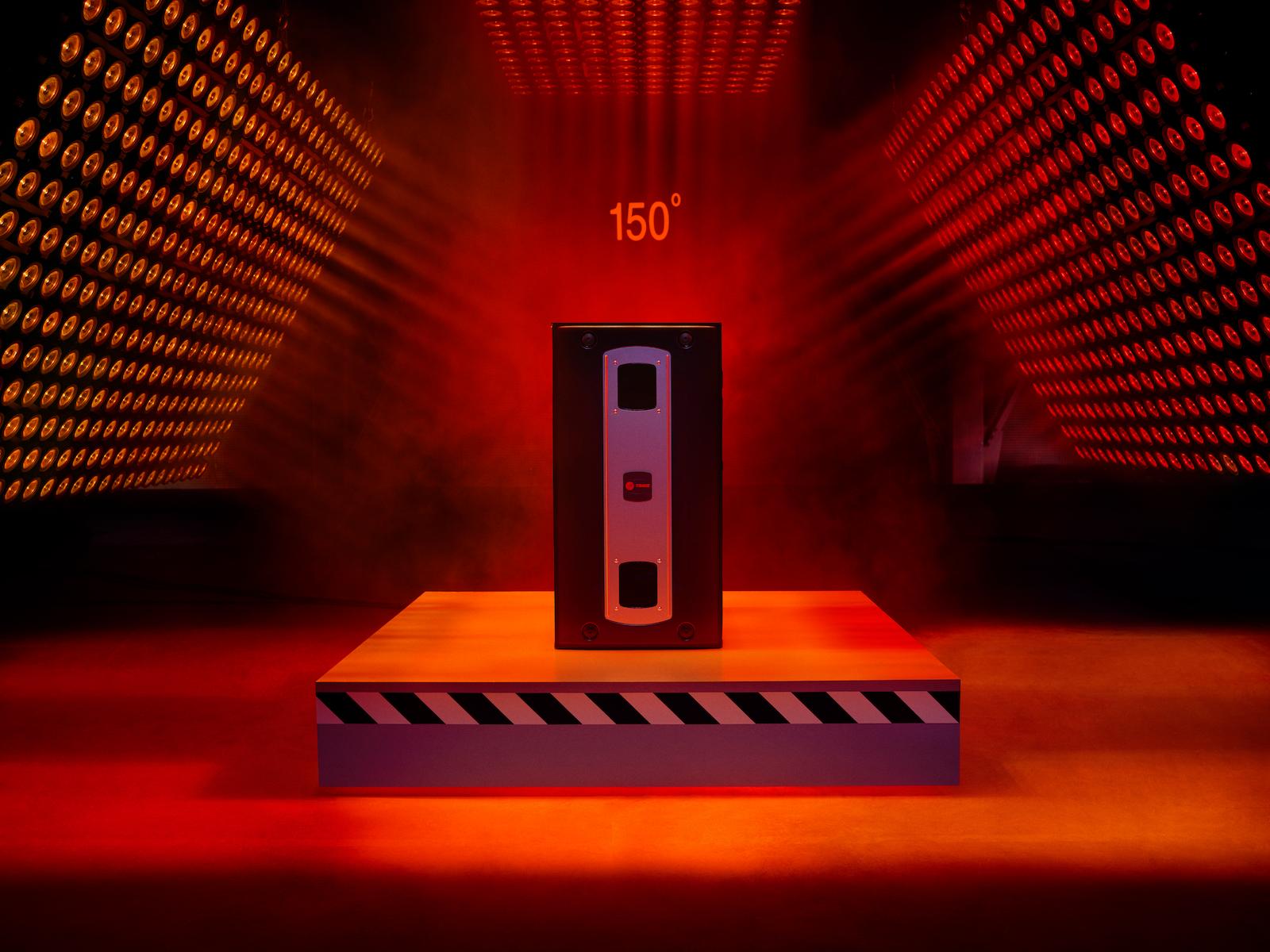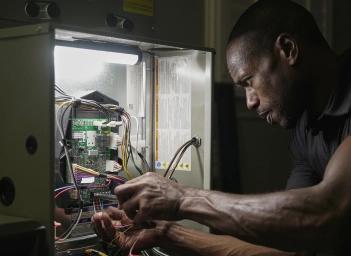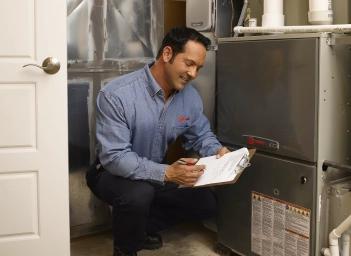What Is a Condensing Furnace?
And why is it so efficient?
A condensing furnace is a type of high-efficiency gas furnace with an Annual Fuel Utilization Efficiency (AFUE) rating of 90% or higher. This means at least 90% of the natural gas it burns goes into heating your home rather than being vented out of your home as flue gas.
By Anne Fonda
What is the difference between a conventional and a condensing furnace? It mostly comes down to fuel combustion, but this affects efficiency, comfort, initial price, and long-term savings.
Benefits of a condensing furnace
There are a lot of things to like about a condensing furnace, including:
- Decreased energy usage
- Increased energy efficiency
- Lower monthly gas bill
- Long-term energy savings
- Increased comfort
- Precise temperature control
- Better heat distribution
- Eliminates cold spots
- Lower carbon footprint
- Eligible for tax credits and rebates
What’s not to like?
How does a condensing furnace work?
How does a condensing furnace achieve all those great things we just listed? It all comes down to the combustion process. These high-efficiency furnaces have improved technology over older furnaces and add a secondary heat exchanger to the process.
Let’s take a look.
Electronic ignition
Some older furnaces still have a pilot light. Pilot lights remain permanently on, meaning the furnace is burning a bit of gas around the clock. This can lead to higher energy bills.
Condensing furnaces utilize an electronic ignition system such as a hot surface ignitor. Electronic ignition systems eliminate wasted fuel and offer better reliability than pilot systems.
Modulating gas valve/Two-stage valve
A conventional single-stage furnace has a gas valve that is either on or off, meaning the unit runs at 100% or shuts off. A two-stage or dual-stage burner gas valve has a high and low setting with electronic controls. The most efficient condensing furnaces have a modulating gas valve.
Modulating burner gas valves operate between 40% and 100% depending on your specific heating needs, providing for ultimate comfort and greater efficiency.
Sealed combustion chamber
Conventional furnaces usually have atmospheric combustion chambers which draw air from the inside of your home.
In contrast, condensing furnaces use sealed combustion chambers that draw air from the outdoors. As a result, sealed combustion chambers are more efficient and reduce heat loss.
Variable-speed blower motor
Conventional single-stage furnaces have a blower motor that runs at a single speed - full speed, 100%. Frequent startups and shutdowns can be noisy and waste energy.
The most efficient condensing furnaces use a variable-speed blower motor to provide quieter system startups and shutdowns, greater efficiency, and more thorough heat circulation. Also helps control humidity levels during summer months.
Secondary heat exchanger
Here’s the defining feature that makes a condensing furnace so efficient. Conventional furnaces have one heat exchanger. When a furnace burns natural gas, its exhaust/combustion by-products enter and travel through the primary heat exchanger.
The hot flue gas heats the metal as the gas makes its way to the exhaust outlet of the furnace. As this occurs, the hot metal heats the air circulating over the exterior of the heat exchanger.
A condensing furnace has a secondary heat exchanger. When the combustion exhaust gases leave the primary heat exchanger, instead of exhausting to the outside, they enter the secondary heat exchanger. In the secondary heat exchanger, additional heat is released from the flue gas and water vapor begins to form. This change of state from water as a vapor to a liquid releases latent heat in the secondary heat exchanger, bringing the furnace to an even higher level of efficiency.
Condensate drain line
The liquid that results from the secondary heat exchange process drains out of your furnace and into a small PVC pipe that drains to the outside.
PVC intake and exhaust pipes
Since the exhaust has cooled down in the secondary heat exchanger, it is cool enough to exit your home through a special venting system using PVC pipe. A conventional furnace needs to send the exhaust through a metal flue pipe, and up your chimney (if you have one) to the outside.
Rather than drawing air from inside your home, a condensing furnace will draw in air through the intake pipe (also PVC pipe). You will see both of these pipes attached to your furnace and run to an exterior wall, where they exit. Outside your home, the exhaust pipe points up, and the supply pipe points down.
Factors to consider when choosing a high-efficiency gas furnace
Factors to consider when choosing a condensing furnace include:
Sizing and heating capacity requirements
As with any HVAC system component, accurate sizing matters. You want a high-efficiency gas furnace that has the right heating capacity in BTUs for the size of your home and your climate. Work with an HVAC professional who will look at all of the factors that go into correct sizing. An oversized unit or an undersized unit will each cause problems with even heating and efficient operation.
Cost
With any major home improvement, cost is a consideration. A condensing furnace will cost more upfront than a conventional furnace due to the differences in technology, efficiency, and installation. More on that last one below.
Installation considerations
If you’re replacing a conventional furnace with a condensing furnace, it’s not simply a plug-and-play installation. The HVAC technicians will need to install a condensate drain line as well as supply and exhaust PVC pipe. They will need to drill holes the size of the PVC pipe in an exterior wall.
This extra labor and extra materials will be included in the overall installation cost.
Maintenance requirements
Just as you would with a standard furnace or air conditioner, you should schedule seasonal maintenance to help ensure the system is running at peak performance. You will want to continue to change the furnace filters regularly or clean the permanent filter if your system has one. Check out our air filter cleaning and maintenance guide for more information.
Are condensing furnaces worth it?
If you want increased efficiency, lower gas bills, and you want to lower your carbon footprint, then yes, a condensing furnace would be worth the higher upfront cost. Remember that you will see cost savings due to increased efficiency. If cost is a concern, remember that higher-efficiency furnaces are eligible for tax credits and rebates to help offset the cost.
In addition, HVAC financing can help you manage the cost over several years. If you plan to stay in your home for more than 5 years, the investment could be worth it.
How can I tell if I have a condensing furnace?
As we mentioned at the beginning, condensing furnaces have been around for a while. If you have the paperwork from when your furnace was installed, you can refer to that. You can also Google your brand and model number. Or, simply ask your HVAC service company.
There are also some visual indicators that you have a condensing furnace as opposed to a conventional furnace. Look for a condensate drain line coming out of the bottom portion of the furnace. Look for two PVC pipes connected to your furnace that go to the outside of your home. On your home’s exterior, the exhaust pipe points up and the intake pipe points down.
If you already have a condensing furnace, an eventual furnace replacement will cost less than installing one to replace a conventional furnace because you already have the appropriate venting and drainage.
Trane's condensing gas furnace solutions
As a leader in the HVAC industry, Trane has a range of condensing furnaces to choose from. Trane’s condensing gas furnaces are efficient, reliable, high-quality, and built to last. With regular maintenance, a gas furnace can last 15-20 years or more.
Depending on the model, features and benefits include:
- AFUE ratings 92.1-97.3%
- ComfortLink™ II communicating capability
- Communicating user interface
- Variable-speed blower motor with Comfort-R™ for humidity control
- Vortica™ II blower
- Variable speed draft inducer/two-speed draft inducer
- Increased dehumidification with Comfort-R™
- Modulating gas valve/two-stage gas valve
- Durable silicon nitride hot surface igniter
- 24-volt fuse to protect controls
- Self-diagnosing integrated furnace control
- Durable insulated heat exchanger cabinet
- Automotive-grade gaskets
- Stainless steel secondary heat exchanger
- Control at your fingertips with the Trane Home App
- Lifetime limited warranty on the heat exchangers and a 10-year limited warranty on internal functional parts with registration (residential use only).
Reliable and quiet, these furnaces are guaranteed to keep your home warm and comfortable even on the coldest days.
Considering gas furnace replacement?
If it’s time to replace your furnace, a condensing furnace can provide you with lower monthly heating bills for years to come. But it’s crucial that experienced professionals do your gas furnace installation. A furnace that’s improperly installed will cause you all sorts of problems.
Work with trusted HVAC professionals. Schedule a free quote with your local Trane dealer (or multiple dealers) to find the furnace that’s right for your home.
Anne Fonda, Content Writer
A Content Writer with Trane Technologies, Anne Fonda researches topics and writes for Trane® and associated residential HVAC brands. She works in collaboration with Trane Technologies subject matter experts, offering easy-to-understand, informative content on complex topics. Her goal is to help consumers make informed decisions on the products and services they need.
She has written for HVAC and other service provider websites for over 16 years. Before transitioning to web content writing, Anne had a 14-year stint as an award-winning journalist. She graduated cum laude from the University of Missouri-Columbia School of Journalism.
When she’s not working, Anne enjoys playing word games, reading, gardening, spending time with family, and visiting gardens and museums.
Expert review by John Kim, Senior Product Manager, Furnaces




